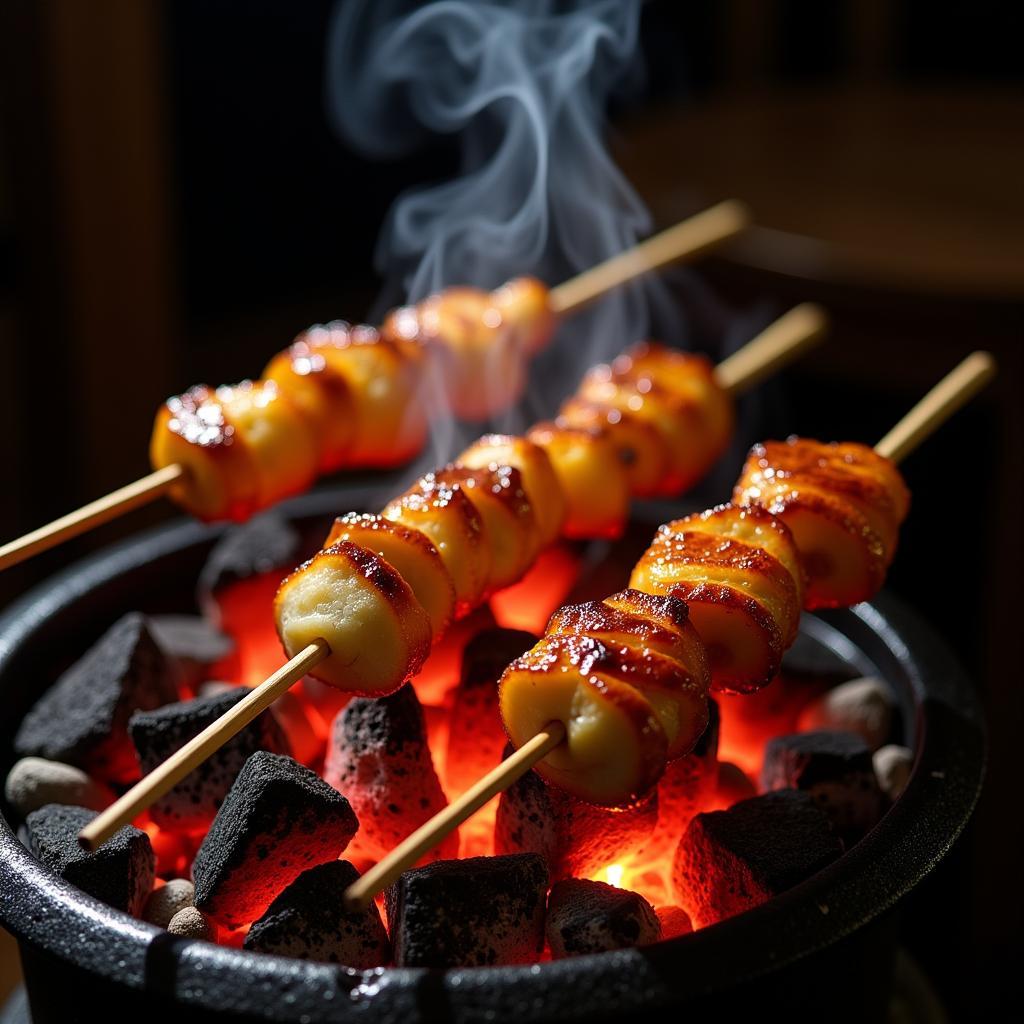“Tori” – the Japanese word for “chicken” – opens a door to a world of diverse and delicious culinary experiences. From the bustling streets of Tokyo to home kitchens across the globe, Tori Food encompasses a wide range of flavors and cooking styles that tantalize taste buds and satisfy cravings. Whether you’re a seasoned foodie or just starting to explore international cuisines, join us as we delve into the art of preparing and enjoying tori food.
 Platter of Crispy Japanese Fried Chicken
Platter of Crispy Japanese Fried Chicken
A Culinary Journey Through Japanese Chicken Dishes
Japanese cuisine is renowned for its emphasis on fresh ingredients, delicate flavors, and elegant presentation. Tori, as a staple ingredient, takes center stage in countless iconic dishes. Let’s embark on a culinary journey through some of the most beloved tori food preparations:
Yakitori: The Art of Skewered Perfection
Yakitori, meaning “grilled chicken,” is a quintessential Japanese street food that has captured hearts and stomachs worldwide. Bite-sized pieces of chicken are skewered and grilled over hot charcoal, creating a smoky aroma and a delightful char.
 Assortment of Yakitori Grilling
Assortment of Yakitori Grilling
From succulent thigh meat to tender chicken meatballs (tsukune), yakitori offers a variety of textures and flavors. The skewers are typically seasoned simply with salt, pepper, or a tare sauce, allowing the natural flavors of the chicken to shine through.
Karaage: Crispy, Juicy, and Utterly Addictive
Karaage, Japanese-style fried chicken, is a testament to the fact that simplicity can be incredibly delicious. Chicken pieces are marinated in soy sauce, ginger, and garlic, then coated in potato starch and deep-fried to crispy perfection.
The result is a symphony of textures – a light and crispy exterior giving way to juicy and flavorful meat. Karaage can be enjoyed on its own, as a topping for rice or noodles, or even tucked inside a fluffy steamed bun.
Oyakodon: Comfort Food at its Finest
Oyakodon, meaning “parent-and-child donburi,” is a heartwarming Japanese rice bowl dish that embodies comfort and flavor. This dish features tender chicken pieces and onions simmered in a sweet and savory dashi-based sauce, topped with fluffy eggs and served over a bed of steamed rice.
The name “parent-and-child” refers to the chicken and egg combination, creating a dish that is both nourishing and satisfying. Oyakodon is a perfect example of how Japanese cuisine seamlessly blends simple ingredients to create extraordinary flavors.
Beyond Japanese Cuisine: Tori Food Around the World
While Japan may be synonymous with tori food, the culinary world offers a plethora of other delicious chicken dishes. Let’s take a quick trip around the globe to explore some notable examples:
- Korean Fried Chicken: Known for its extra-crispy texture and flavorful glazes, Korean fried chicken has become a global phenomenon.
- Butter Chicken: This creamy and aromatic Indian curry features tender chicken cooked in a tomato-based sauce enriched with butter and spices.
- Chicken Adobo: A Filipino culinary treasure, chicken adobo features chicken braised in a tangy and savory sauce made with vinegar, soy sauce, and garlic.
 A Spread of Diverse Chicken Dishes from Around the World
A Spread of Diverse Chicken Dishes from Around the World
These examples showcase the incredible versatility of chicken and its ability to shine in dishes from every corner of the world.
Tips for Preparing Delicious Tori Food at Home
Ready to bring the flavors of tori food into your own kitchen? Here are some expert tips to elevate your cooking:
- Marinate your chicken: Marinating chicken, even for a short period, can significantly enhance its flavor and tenderness. Use a combination of soy sauce, sake, mirin, ginger, and garlic for a classic Japanese marinade.
- Don’t overcrowd the pan: When pan-frying or sautéing chicken, avoid overcrowding the pan. This will ensure that the chicken cooks evenly and develops a beautiful golden-brown crust.
- Use a meat thermometer: To ensure that your chicken is cooked through, use a meat thermometer to check the internal temperature. Chicken should be cooked to an internal temperature of 165°F (74°C).
- Experiment with flavors: Don’t be afraid to experiment with different flavors and seasonings. From spicy gochujang to fragrant lemongrass, the possibilities are endless.
Conclusion
From the intricate flavors of yakitori to the comforting warmth of oyakodon, tori food offers a culinary adventure for every palate. Whether you’re a seasoned chef or a home cook looking to expand your repertoire, embracing the world of tori food is a journey filled with delicious discoveries. So, gather your ingredients, put on your apron, and let the exploration begin!
Need help navigating the world of tori food? Contact us!
Phone: 02437655121
Email: minacones@gmail.com
Visit us: 3PGH+8R9, ĐT70A, thôn Trung, Bắc Từ Liêm, Hà Nội, Việt Nam.
Our team is available 24/7 to assist you.